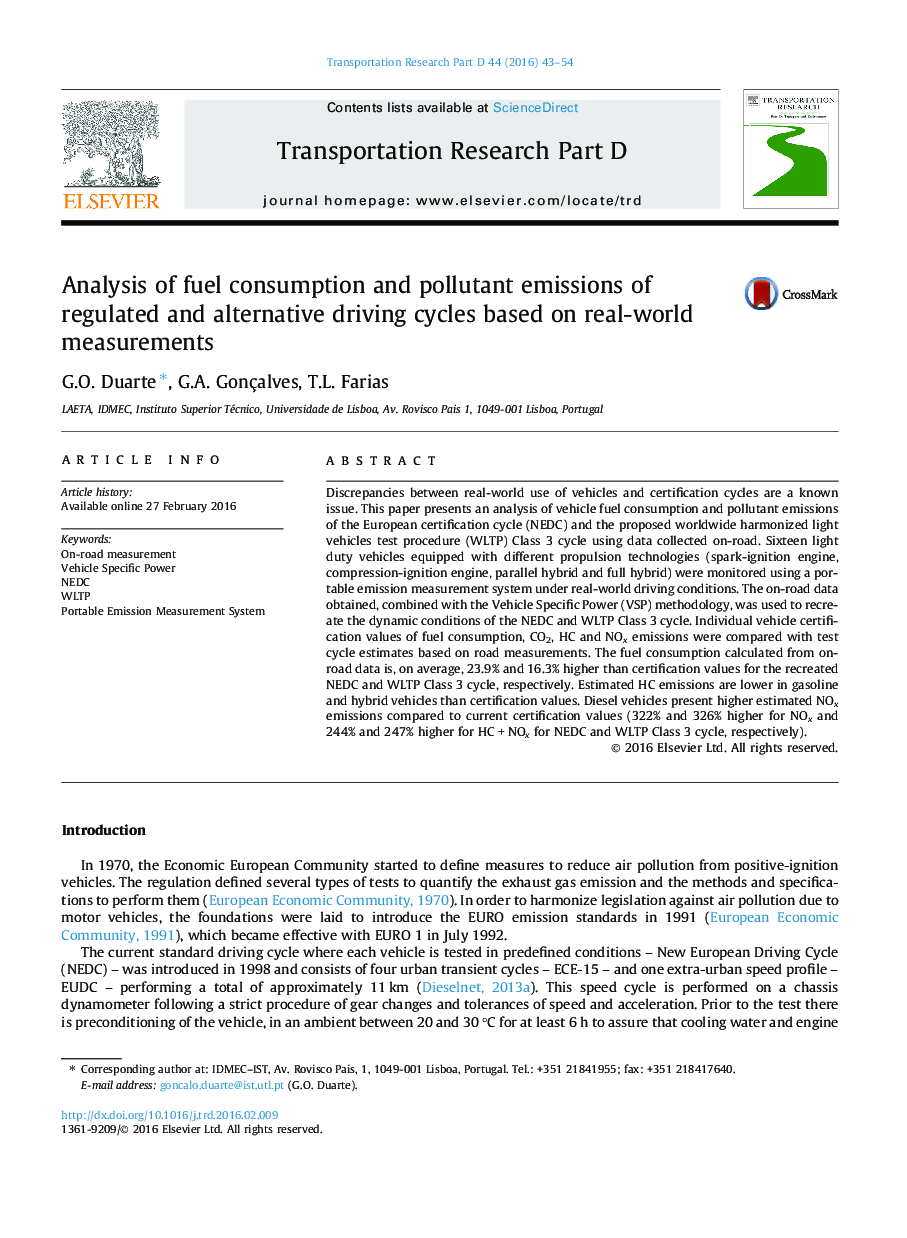| Article ID | Journal | Published Year | Pages | File Type |
|---|---|---|---|---|
| 1065644 | Transportation Research Part D: Transport and Environment | 2016 | 12 Pages |
•Fuel and pollutant analysis for NEDC and WLTP using on-road data of 16 vehicles.•Spark-ignition, compression-ignition, parallel and full hybrid were monitored.•NEDC underestimates fuel by 23.9 ± 16.8% and CO2 by 25.5 ± 16.9%.•Compression-ignition vehicles are 322.3 ± 197.0% for NOx over NEDC.•Average decrease of 6% on fuel and CO2 for WLTP Class 3 comparing with NEDC.
Discrepancies between real-world use of vehicles and certification cycles are a known issue. This paper presents an analysis of vehicle fuel consumption and pollutant emissions of the European certification cycle (NEDC) and the proposed worldwide harmonized light vehicles test procedure (WLTP) Class 3 cycle using data collected on-road. Sixteen light duty vehicles equipped with different propulsion technologies (spark-ignition engine, compression-ignition engine, parallel hybrid and full hybrid) were monitored using a portable emission measurement system under real-world driving conditions. The on-road data obtained, combined with the Vehicle Specific Power (VSP) methodology, was used to recreate the dynamic conditions of the NEDC and WLTP Class 3 cycle. Individual vehicle certification values of fuel consumption, CO2, HC and NOx emissions were compared with test cycle estimates based on road measurements. The fuel consumption calculated from on-road data is, on average, 23.9% and 16.3% higher than certification values for the recreated NEDC and WLTP Class 3 cycle, respectively. Estimated HC emissions are lower in gasoline and hybrid vehicles than certification values. Diesel vehicles present higher estimated NOx emissions compared to current certification values (322% and 326% higher for NOx and 244% and 247% higher for HC + NOx for NEDC and WLTP Class 3 cycle, respectively).
